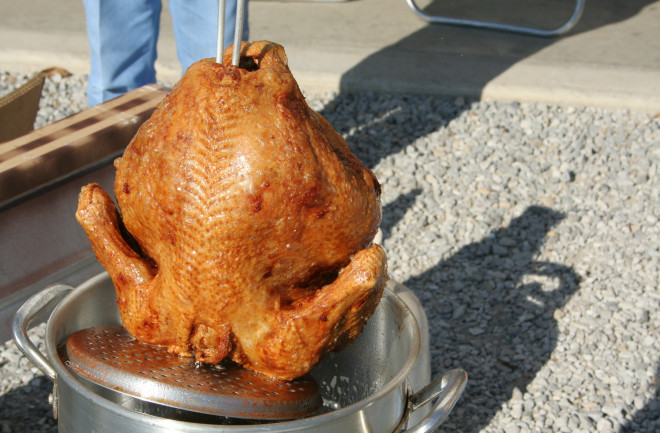Is a Deep-Fried Turkey your Destiny [Photo Credit: Jinx!] While you may think the most dangerous thing you can do during the holidays is talk politics with your uncle, starting a kitchen fire is a more realistic threat to your safety. According to the United States Fire Administration (USFA), the number of structure fires double on Thanksgiving, causing on average $28 million in property damage^1. Cooking causes the majority of these blazes, with grease and oil as the main culprits in ignition^2. Despite the astonishingly large number of holiday mishaps, home cooks continue using fats. A select few even engage in one of the most daring of food adventures: deep-frying a turkey. A quick Internet search for “deep-fried turkey” reveals how dangerous this culinary practice can be. There are plenty of videos and pictures that document the aftermath of a deep-fried turkey fire. A careless and unprepared chef can turn a deep-fried turkey into a deep-fried disaster within minutes. The bird quickly becomes engulfed in a fireball that can be seen from the rest of the neighborhood. So then, what makes deep-frying more appealing than roasting? More importantly, can it be done safely?
Deep-fried Turkey: Delicious or Dangerous?

Newsletter
Sign up for our email newsletter for the latest science news
0 free articles left
Want More? Get unlimited access for as low as $1.99/month
Stay Curious
Sign up for our weekly newsletter and unlock one more article for free.
View our Privacy Policy
Want more?
Keep reading for as low as $1.99!
Already a subscriber?
Find my Subscription
More From Discover
Stay Curious
Subscribe
To The Magazine
Save up to 40% off the cover price when you subscribe to Discover magazine.
Copyright © 2025 LabX Media Group
